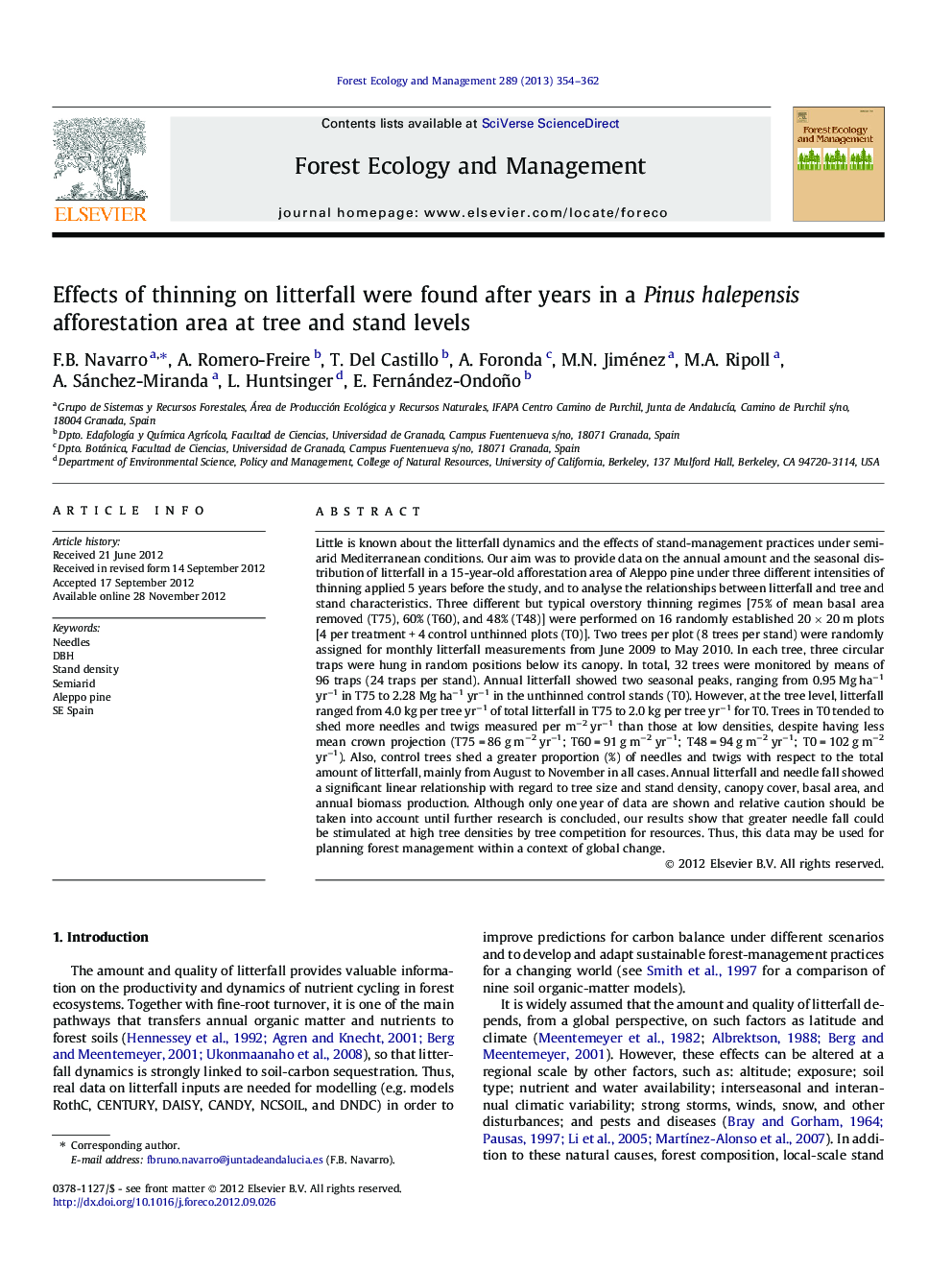| کد مقاله | کد نشریه | سال انتشار | مقاله انگلیسی | نسخه تمام متن |
|---|---|---|---|---|
| 86998 | 159226 | 2013 | 9 صفحه PDF | دانلود رایگان |

Little is known about the litterfall dynamics and the effects of stand-management practices under semiarid Mediterranean conditions. Our aim was to provide data on the annual amount and the seasonal distribution of litterfall in a 15-year-old afforestation area of Aleppo pine under three different intensities of thinning applied 5 years before the study, and to analyse the relationships between litterfall and tree and stand characteristics. Three different but typical overstory thinning regimes [75% of mean basal area removed (T75), 60% (T60), and 48% (T48)] were performed on 16 randomly established 20 × 20 m plots [4 per treatment + 4 control unthinned plots (T0)]. Two trees per plot (8 trees per stand) were randomly assigned for monthly litterfall measurements from June 2009 to May 2010. In each tree, three circular traps were hung in random positions below its canopy. In total, 32 trees were monitored by means of 96 traps (24 traps per stand). Annual litterfall showed two seasonal peaks, ranging from 0.95 Mg ha−1 yr−1 in T75 to 2.28 Mg ha−1 yr−1 in the unthinned control stands (T0). However, at the tree level, litterfall ranged from 4.0 kg per tree yr−1 of total litterfall in T75 to 2.0 kg per tree yr−1 for T0. Trees in T0 tended to shed more needles and twigs measured per m−2 yr−1 than those at low densities, despite having less mean crown projection (T75 = 86 g m−2 yr−1; T60 = 91 g m−2 yr−1; T48 = 94 g m−2 yr−1; T0 = 102 g m−2 yr−1). Also, control trees shed a greater proportion (%) of needles and twigs with respect to the total amount of litterfall, mainly from August to November in all cases. Annual litterfall and needle fall showed a significant linear relationship with regard to tree size and stand density, canopy cover, basal area, and annual biomass production. Although only one year of data are shown and relative caution should be taken into account until further research is concluded, our results show that greater needle fall could be stimulated at high tree densities by tree competition for resources. Thus, this data may be used for planning forest management within a context of global change.
► Thinning reduced annual litterfall, needle, and twig fractions at the stand level 5 years after the treatment application.
► However, thinning increased the total litterfall at the tree level because thinning reduced competition among trees.
► High densities tended to shed more needles and twigs measured per m−2 yr−1 than low densities (at tree level).
► Thinning may be used within a context of global change, reducing tree competition and, hence, possible stress risks.
Journal: Forest Ecology and Management - Volume 289, 1 February 2013, Pages 354–362